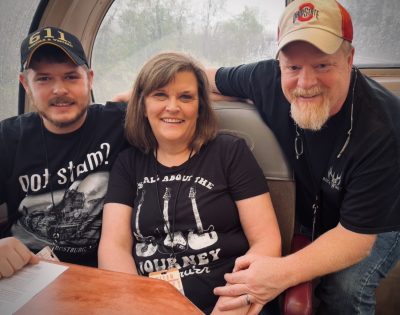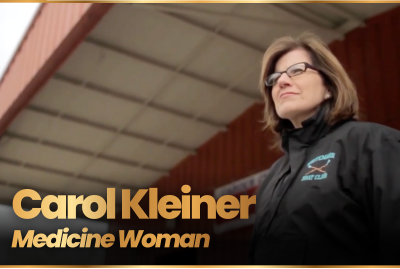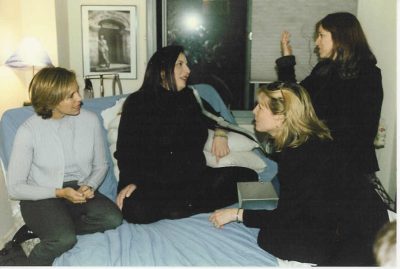ALS has been a notoriously difficult disease to address therapeutically because of its heterogeneity in the clinic. The progression and symptoms of ALS differ broadly from person to person, and though 10% of cases can now be linked to specific genetic mutations, the progression of ALS for any given mutation may still differ per person, and the 90% of ALS cases that are sporadic show wide variability as well. This feature of ALS has made narrowing in on specific disease mechanisms, and therefore, targeting the disease through therapies, a slow-going process.
At Project ALS, we understand that, just as many hands make light work, so too do many approaches make difficult problems easier to solve. To get more potential therapies through the early stages of drug development and closer to being shared with people diagnosed with ALS safely, effectively, and quickly, we’ve driven the development of multiple models for investigating ALS. Recently, our research has resulted in the emergence of novel mathematical and yeast-based models that are shifting the needle on ALS diagnostics and drug screening in exciting ways.
Why Many Approaches are Better than One
What is a model exactly, and why does developing new models matter for solving ALS? A model is a tool that allows us to uncover insights to a complicated phenomenon without getting bogged down by the many complex features of said phenomenon. In the study and treatment of diseases, models allow us to isolate specific features of disease, develop greater understanding of how these features work, and then test how they can be manipulated. Models can range from very basic to very complex. More basic models are usually farther removed from the exact disease mechanisms in people, but able to reveal fundamental aspects and generate new predictions in fast, easily observable ways, while more complex models are closer to human disease and ideal for testing how likely the strongest therapeutic candidates are to work in people. Developing multiple disease models across this spectrum of basic to complex is critical because it allows broad screens and more specific tests to occur in parallel—driving rapid progress and validation of mechanisms and tools in multiple independent ways.
At Project ALS, we have worked to develop and validate multiple models of ALS to aide in our mission to drive reliable ALS diagnostics, treatments, and eventually, a cure. Previously, we harnessed the power of genetics and development to transform stem cells and even patient skin cells into ALS-impacted motor neurons in a dish. Our ALS-in-a-dish model has since proven fruitful in testing novel therapeutics, like Prosetin. More recently, we used genetic tools to develop a novel mouse model that better replicates ALS disease progression in people and allows more rapid diagnostics and therapy testing in the lab. This new model gave rise to Jacifusen, a genetically-tailored treatment for people with FUS ALS, that is now in clinical trials.
A Mathematical Model for Tailoring Treatments
Because ALS is a highly variable disease, we must be able to group ALS into different mechanistic categories, allowing us to select the most effective treatment for any person with ALS in a reliable manner. Thanks to a new study from the Altschuler and Wu labs, we now have a mathematical model that can do exactly that. Kumbier et al. have developed a method in which they can take cells from skin samples of people with different types of ALS and automatically categorize them into pathological groupings based on their physical properties. Namely, the researchers identified key proteins from over 200 candidates that show clear expression differences across different types of ALS and healthy cell samples. Imaging the protein expression across cell samples and developing a machine learning algorithm—a commonly used mathematical tool that learns patterns in large datasets to form unbiased categorizations—that could distinguish between healthy and FUS ALS cells allowed the researchers to create a “disease spectrum” along which to categorize intermediate protein expression patterns of other ALS cells. With this disease spectrum, scientists can more directly address how ALS manifests on a cellular level without needing to fully understand the complex cellular pathways downstream of specific gene-based ALS types or sporadic ALS mechanisms. Further, Kumbier et al. were able to demonstrate that Jacifusen can effectively reverse the physical processes that impact FUS ALS cells using their categorization method, another validation of this promising ALS therapy developed thanks to Project ALS. In the future, this mathematical model can both help researchers to identify what types of ALS different treatments are most effective on, and help clinicians to identify the best ways to tailor treatment for people with ALS.
A Cellular Model for Rapid Therapy Development
Another research effort by Project ALS has recently resulted in the development of a new cellular model for rapidly screening multiple potential therapeutic compounds at different concentration on multiple genetic types of ALS. Namely, the Chavez lab at the Columbia University Motor Neuron Center has established the rapidly dividing, genetically manipulable organism, yeast, as a new model for observing the impacts of ALS-associated proteins on cellular health. Multiple genetic strains of yeast with ALS-associated mutations show observable growth defects, demonstrating the conservation of basic cellular functions between this single cell organism and human cells. Because yeast grow rapidly and can be cultured in large numbers, they are an ideal model for massive screens of what types of compounds could be effective therapies for ALS and at roughly what concentrations. Using this new model, Chavez’s group has identified a specific protein that can be manipulated to rescue the health of yeast with FUS ALS. Thanks to this new model, researchers can now transfer this and other promising compounds to additional models developed by Project ALS, like patient-derived motor neurons in a dish.
Together, these two new models help to push our progress towards effective, individually tailored treatments for ALS. As Project ALS research develops new and varied models, the number of treatment options available and our understanding of how and when treatments will work best only improve. With diverse models, Project ALS is building a future with treatments for the entire ALS community.



